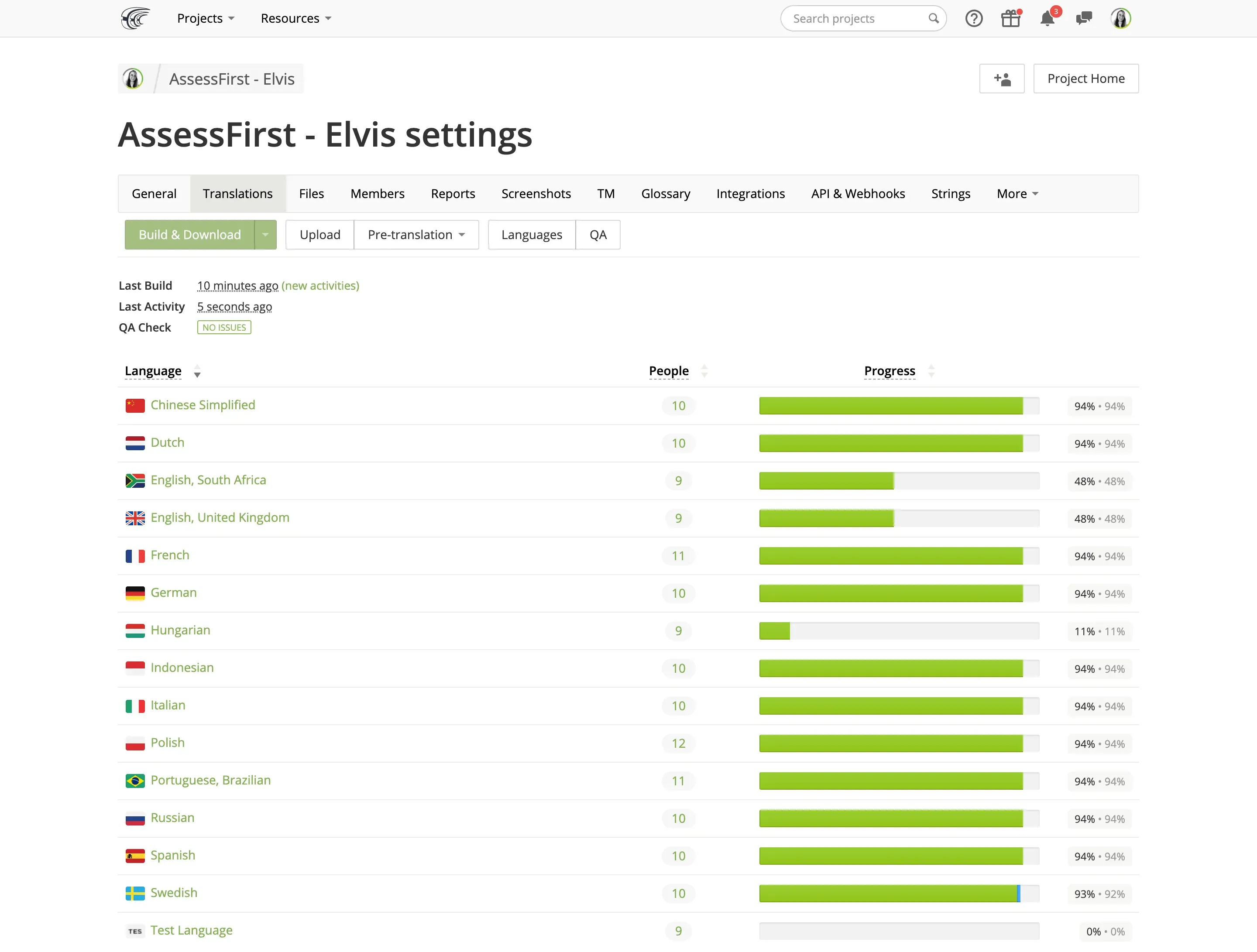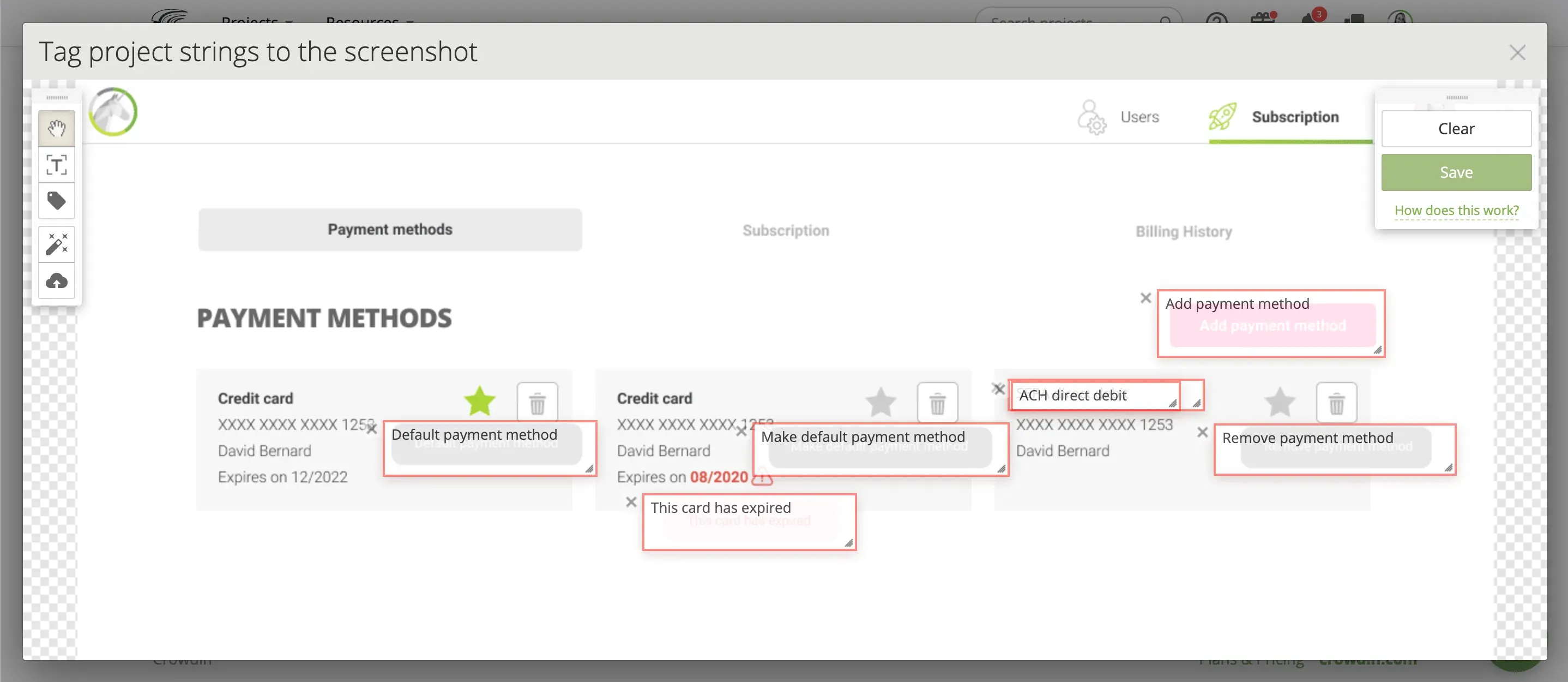Camila Pedraza is the Paris-based Localization Manager at AssessFirst, a human factor prediction solution for HR and hiring managers, combining behavioral science with AI in psychometric testing.
In this blog, Camila talks about her localization journey from Colombia to France and from sports apparel to psychometric testing via Crowdin support. Camila’s team is now localizing their product into 14 languages after switching the primary source language and migrating content to Crowdin from a different tool.
From Sports Apparel to HR Solutions
Born in Colombia to a bilingual family, Camila Pedraza’s first love was literature and literary translation, which soon led to work as a copywriter, translator, and interpreter.
Camila’s first brush with localization came with a global sports brand’s e-commerce website going into five different variants of Latin American Spanish. “Sports has a lot of specialist terminology in the different Latin American variants, and when you’re localizing sports apparel for an e-commerce site, it’s really important to get the terms right for each market,” says Camila.
Camila relocated to France for her master’s degree, and plunged straight back into the world of e-commerce with a traineeship in an arts and antiques company, managing localization of their e-commerce site from French into Chinese and English.
“After my degree, I went to HR software company PeopleDoc. They were already localizing content into 17 languages in Crowdin and had certain established guidelines and workflows. So although I was their first dedicated localization manager, it was great to start improving on an established foundation, and in two years, we grew from 17 to 32 languages,” explains Camila.
Psychometric Testing Deals with People’s Lives
Today, Camila heads localization at AssessFirst.
“At AssessFirst, we have an app and three separate psychometric tests. The tests result in a psychometric analysis about who people are, how they behave, what motivates them, how they work in a team, their affinity to their new manager, and so on,” explains Camila.

AssessFirst’s content is localized into 14 languages, and quality is paramount, says Camila. “We are describing a person and talking about their life, so we need to do that just right, with the right terms and with the right cultural references, to do them justice.”
Working with huge amounts of legacy content that had grown organically over 20 years has been a challenge and an opportunity for Camila’s first year at AssessFirst.
“The product is fantastic and it deserves to be properly structured, managed and localized. Over the years, the content had accumulated into huge chunks of text, including 430 000 words in a single file of 18 000 lines with no context, which we have been cleaning, segmenting and structuring better, working closely with our developers.”
Under Camila’s direction, legacy content has been migrated from POEditor to Crowdin. The primary source language has also been switched from French to English, allowing Camila to control the localization process better and to have access to more specialist translators.

Camila works with a team of regular freelancers for content, bringing in her favorite translation agency for specific projects like website translation and optimizing content for localized SEO.
The switch to English also fell in line with what was happening at the company during the coronavirus pandemic.
“AssessFirst are in many ways pioneers,” says Camila, “and early on in the pandemic the company decided to go fully remote. I’ve only been to the office once since I first joined in April 2020! A fully remote setup and English as the company language also allows AssessFirst to find great talent anywhere in the world.”
Speaking the Developers’ Lingo
“If there’s one thing I wish I had known early on in my career, it’s how critical developers are to localization, and how important it is to speak their lingo. As a developer, you’re totally focused on the software or app working right, and whether there are linguistic issues in the content is secondary,” says Camila.
“I spend a lot of time working with development and advocating localization, and to do that well you need to understand how localization engineering works, and how to speak to engineers in their own language.”
Camila herself has always been a coder as well as a linguist, having taught herself programming languages at fifteen so she could build her own web content. Picking up the developers’ lingo was easy, and working directly with developers has allowed her to bring localization to focus in a way that pure translation management couldn’t or wouldn’t have.
Localization as an Enabler of ROI
Traditional localization metrics around analyzing content and continuous improvement are interesting, but to Camila, they’re not enough.
At AssessFirst, Camila is looking to start building metrics that measure customer success, asking users whether the localization is appropriate and whether they really feel they are working in a tool that’s been created for their language.
Another critical metric Camila wants to explore is sales and customer retention. “You need to talk to marketing and feed back into the marketing loop. It’s the customers who are driving localization, and their needs that determine which languages should be implemented, reviewed and improved.”
“I ask our sales and customer success teams to let me know whenever they get a request from a new client. The key questions for localization are what business the client represents and how much we would lose out on if we didn’t do their language. I see localization as an enabler for ROI: if we do this, it allows us to go into this new market or get this big fish of a client.”
To Camila, understanding where the business is going is critical, but apart from business metrics for localization, AssessFirst’s unique sector sets strict parameters for maintaining a balance in psychometric test questions.
“In psychometric testing, you analyze test data to ensure the test is equally accurate across languages and cultures. In our tests, for example, we ask people to choose between two options. They both have to be equally likely to be chosen, statistically speaking. If you start deviating from that to, say, a 40/60 probability, then there’s a problem with either the question or the answers. Maybe one of the options is confusing to the target audience, or maybe it’s just not as appealing to that specific culture. You have to be careful so that you localize in a way that does not skew the test results,” explains Camila.
Linking localization back to customer satisfaction, customer retention, and to the company’s vision is what drives Camila.
“I feel that in my work at AssessFirst I have a definite impact on making sure that people are getting the jobs that are right for them. I also took the psychometric tests and really saw myself in the results, not just in the good things but also in the things where I can do better.”
Choosing Crowdin as a Localization Software
“I first started working with Crowdin in my previous role,” says Camila. “I was used to working in CAT tools, but Crowdin had a completely different feel. It looked modern and had all the interfaces and functionality that I had missed in the more traditional translation tools.”

Camila brought Crowdin with her to AssessFirst. “There are a lot of things I like about Crowdin, but before I committed to it again, I wanted to explore other tools, so I talked to sales, got demos, and listed all the pros and cons, but very quickly realized I was going to stick with Crowdin.”
“The choice was easy to justify. I haven’t had a conversation with anyone at Crowdin who didn’t know exactly what they were talking about in terms of their product and its functionality, or been very quick to find out. Even all my sales discussions have been with someone from support, which means that when I ask technical questions, they know what I’m talking about, which means a lot to me. I feel like I have a direct partnership with support.”
In Crowdin, Camila stays on top of the localization process, keeping context connected to content using the screenshot tool, and staying in constant touch with the translators via a questions loop connected to her Slack.

“A lot of issues with quality may actually not come from the translation itself, but from the methodology, resources, context, segmentation, and so on,” says Camila. “I can have the best translator ever, but if I don’t give them the tools and the content that’s translation ready and worth translating, I’m not getting the best result out of the process.”
But Camila is a scrupulous customer. “I guess if you talk to the support people in Crowdin, you’ll hear that I’m in touch with them all the time, suggesting improvements. I have tried other tools and keep on coming back to Crowdin, but although I love the tool, I know that as a user I can help make it even better.”
Go to new markets with Crowdin
Khrystyna Humenna
Khrystyna Humenna is Head of Marketing, with over six years of experience in the localization industry. Her expertise is built on a deep understanding of various localization projects, informed by extensive customer interviews she has conducted.
